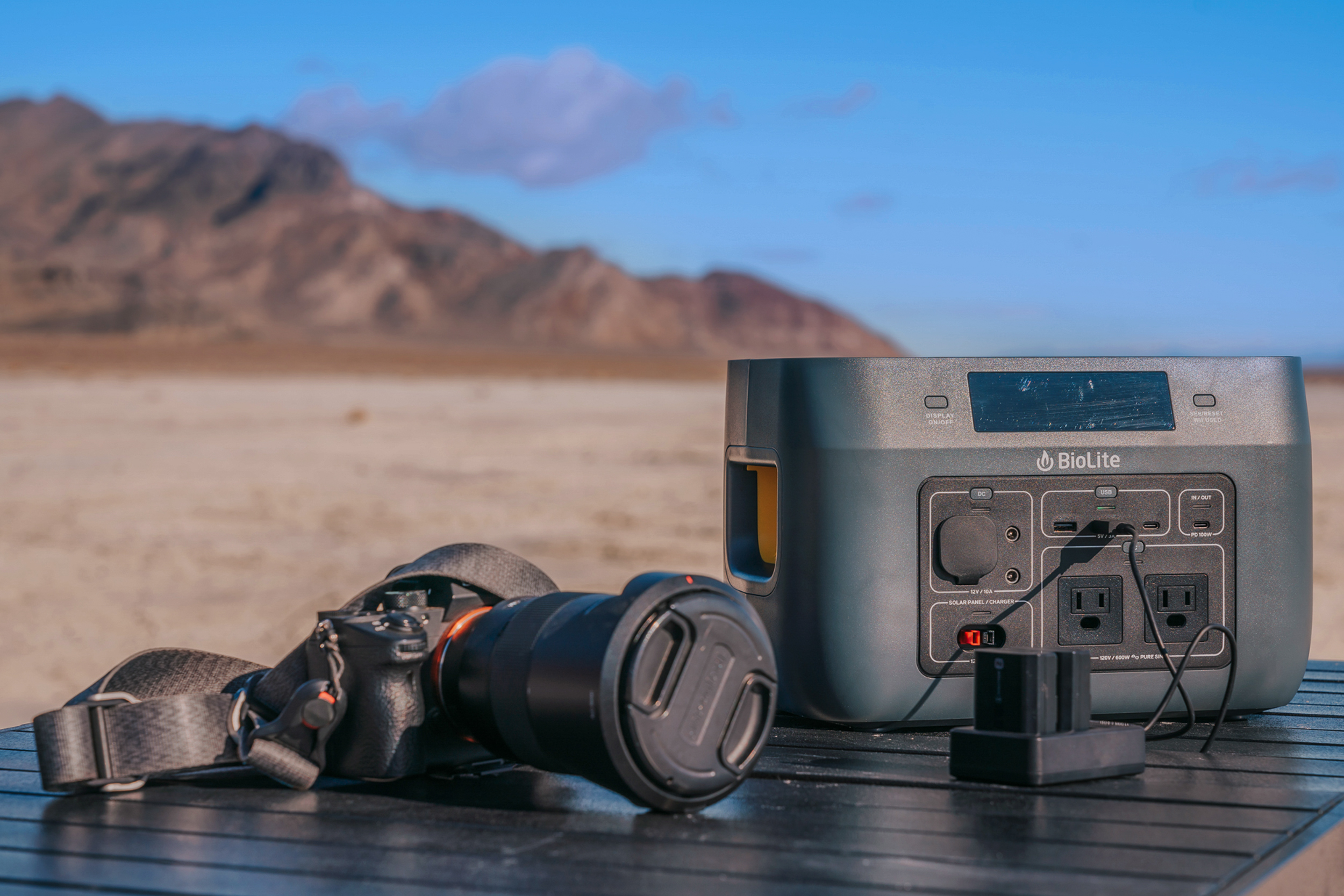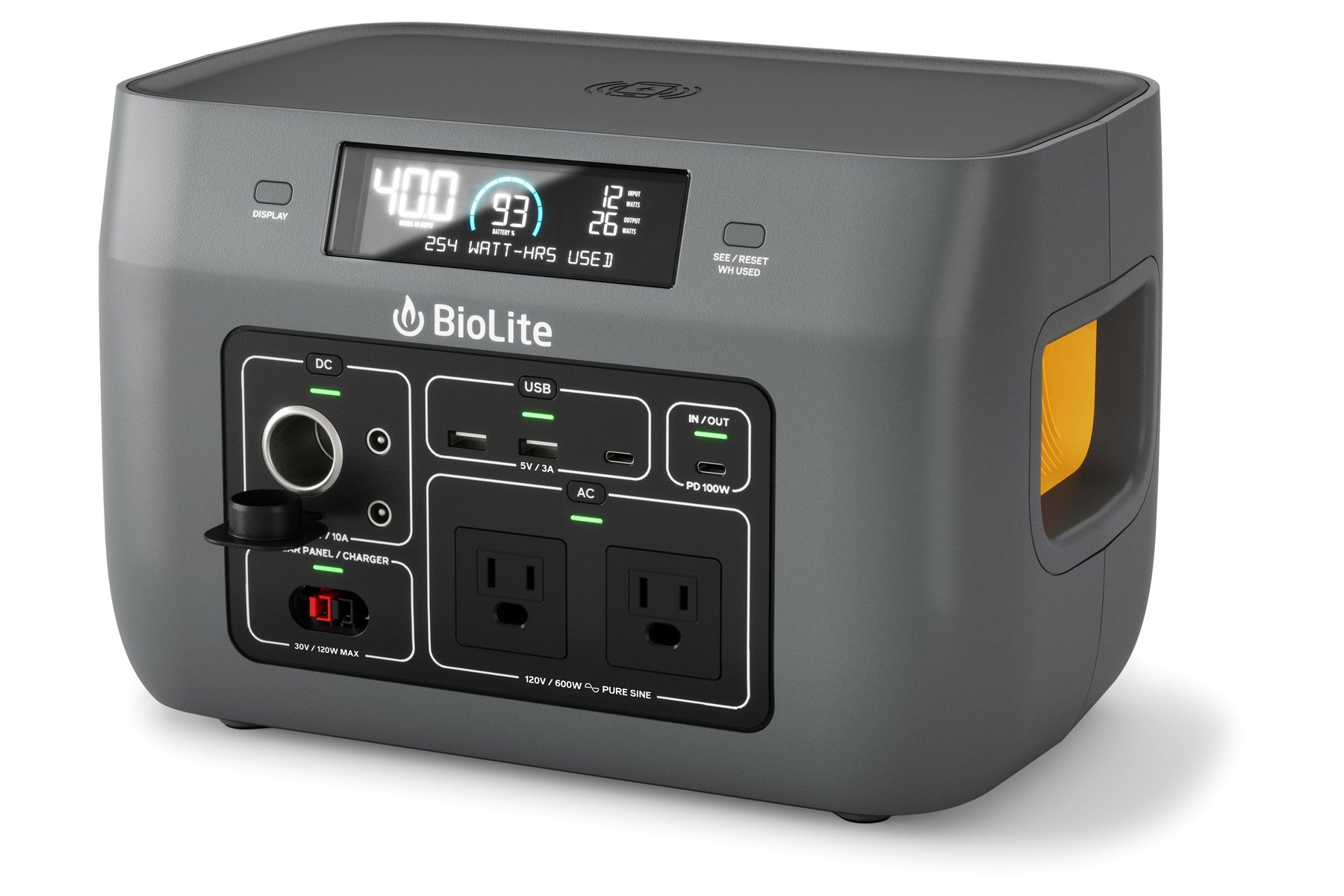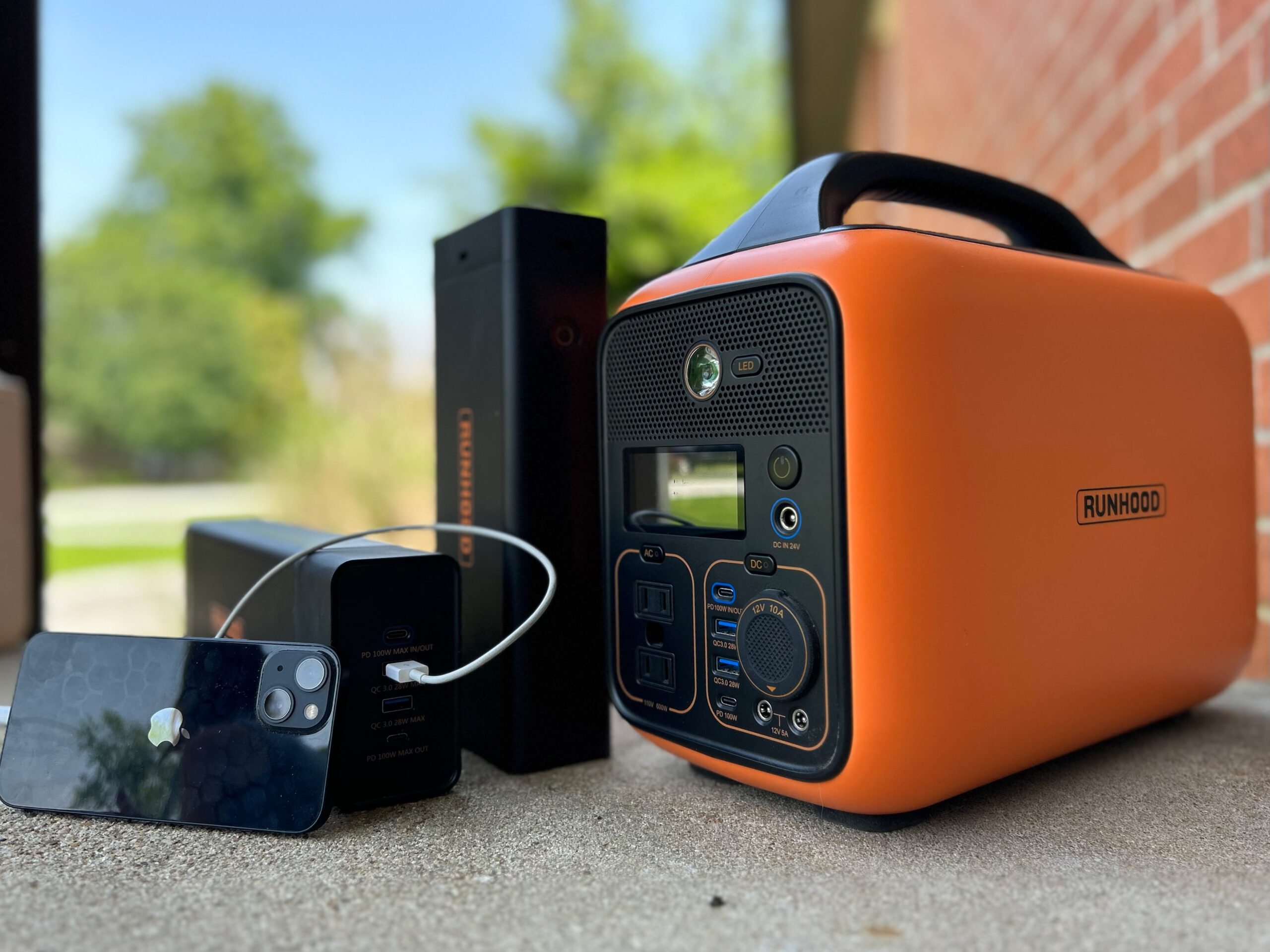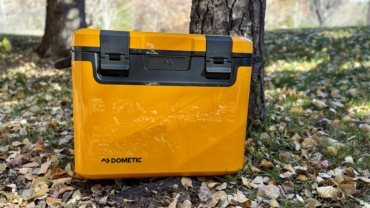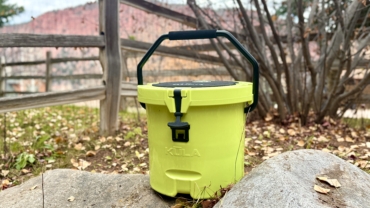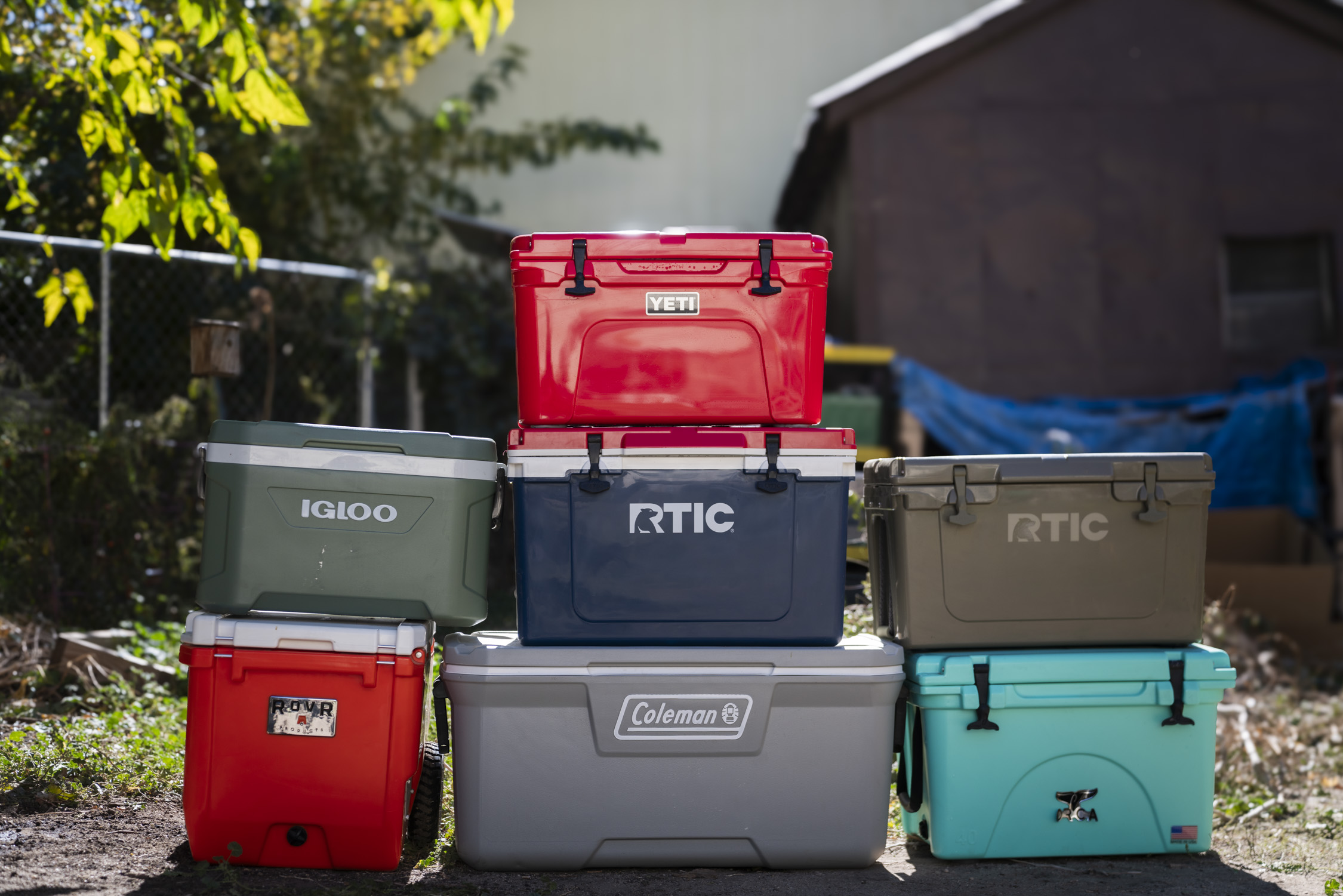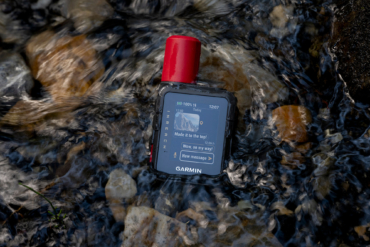I’ve been using power stations for car camping and mobile office use for years. Outside of a few bargain-brand units, they’ve all adequately done the job of powering my equipment. But none of them stood out in any way.
The BioLite BaseCharge 600 was the first power station that elicited any emotion or reaction from me. Visually, it looked clean and modern, like it belonged in an upscale downtown condo and not in the back of my dirt-encrusted Subaru Outback or my Vandoit camper van.
I hoped that the modern visual aesthetic would match equally modern performance. The outdoor-oriented power station market is saturated with competitors, and without top-end performance, I wasn’t sure that the BioLite Base Charge 600 warranted a standalone review.
I tested the BioLite BaseCharge 600 over 6 months while car and van camping and working mobile out of both cars in urban and wilderness settings. It powered everything from cellphones to blenders, putting a wide range of loads on the lightweight unit. I paired it with the perfectly matching BioLite SolarPanel 100 for the duration of the test.
In short: The BioLite BaseCharge 600 power station worked remarkably well, even under the high loads of hot water kettles and blenders. It never failed to provide reliable power in every conceivable environmental condition. From 100+ degrees in the summer to nights in the teens, the BaseCharge 600 kept the electrical current flowing. It’s light, and I dare say, a really good-looking power station — which makes it stand out in a flooded market.
- Battery capacity: 622 Wh (21.6V, 28.8 Ah), Li-ion (NMC)
- Cycle life: 1,000 cycles to 80%+ capacity
- Input ports: 1 x 100W USB-C PD110V:600W, 2 x 1,000W Surge AC, 2 x 5V/3A USB A, 1 x 5V/3A USB C
- Output ports: 1 x 5V, 9V, 12V, 15V, 20V/5A (100W) USB-C PD, 1 x1 2V, 120W DC car port, 2 x 120W, 5.5 mm OD / 2.1 mm ID DC barrel, 1 x 10W wireless charger
- Warranty: 2 years
Pros
- Compact and lightweight
- Handled high loads well
- Easy-to-read and understand control panel
- Modern, clean aesthetics
Cons
- No water-resistance rating
BioLite BaseCharge 600 Review
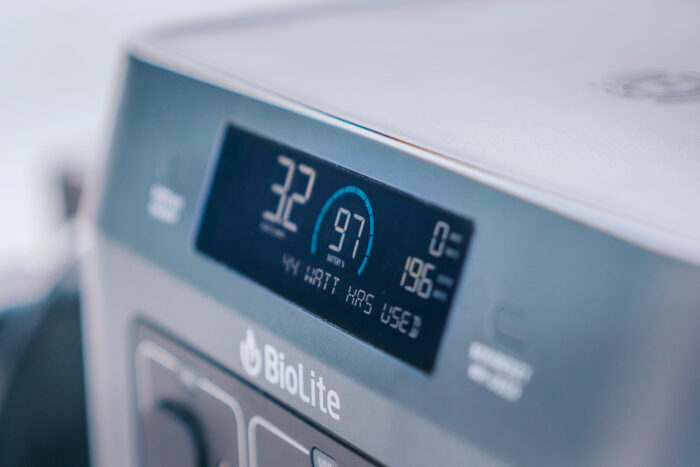
As I unboxed the BioLite BaseCharge 600, I knew it was light for the capacity. At a verified 13 pounds, 2 ounces, it was much lighter than any other power station of similar capacity I have used. The deep side handles also made moving around with one hand easy.
For comparison, Goal Zero claims a weight of 16.1 pounds for its 500W Yeti 500, and Bluetti claims a 19-pound weight for its AC60 600W unit.
Other campers and mobile office partners commented on “IKEA” or “Apple” aesthetics and that it would look correct in a mega-luxury camper van. The visual appeal was a far cry from other power stations I had been using for years, which were boring and utilitarian in appearance.
At roughly 12″ x 8″ x 8″, the BaseCharge 600’s small dimensions for its capacity fit well in the cramped confines of my Subaru. With the SolarPanel 100, it also was small enough to always pack in both car and van as a “just in case” item.
Performance in the Field
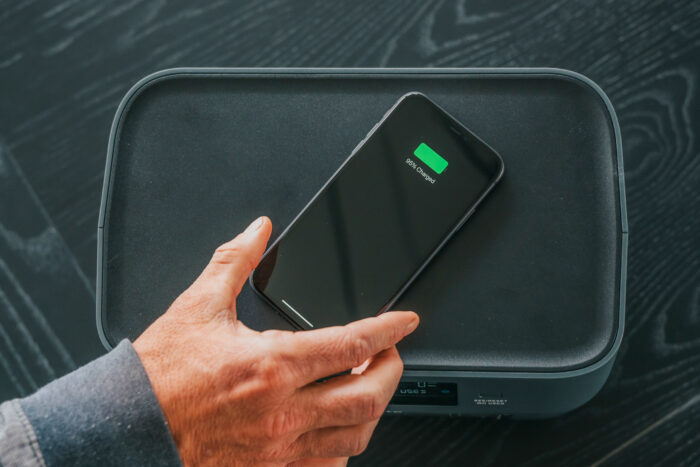
BioLite BaseCharge 600 Power Delivery
Like other high-quality power stations, the BioLite BaseCharge 600 had zero issues, keeping multiple laptop computers, camera and GoPro batteries, Starlink dish and router, and other office electronics charged up and operating all day, with tons of power to spare.
I assumed this minimal level of performance for the MSRP of $559.
High-current appliances such as electric water kettles and blenders have tripped up other outdoor-based power stations. I used both repeatedly during most days I was testing.
Each time, the BioLite BaseCharge 600 indicated on its easy-to-read dashboard that it was delivering 500 W of its 600W (1,000W surge) capacity. And it did so without a hiccup or complaint, repeatedly. Sometimes, it did so one after the other during my morning double coffee and smoothie ritual.
The BioLite BaseCharge 600 also powered a Dometic CFX28 fridge for a weekend of car camping in 60-70-degree temperatures. It arrived home with lots of juice left on board.
The entire top surface is a 10W wireless induction charger, which kept multiple phones charged daily. It was such a convenient addition that I’m surprised that not all power stations do this yet.

Recharging
I usually had the brand’s SolarPanel 100 connected during the days. The panel output varied as the sun arced across the sky and clouds interrupted direct sunlight. But it was always at least trickling in some current. BioLite claims the SolarPanel 100 can deliver an 85% charge in 6 hours, most likely under ideal conditions. In casual observations, I predicted similar charging times.
I loved the stiff, compactly folding BioLite SolarPanel 100 unit and the simple yet effective “aiming” device that quickly gave me the most efficient panel orientation. Also, the solar panel’s looks matched the BaseCharge 600’s aesthetics perfectly.
From totally dead, the included 90W AC charger got the unit to 100% capacity in 8-9 hours. The brand’s site claims it takes 7 hours to reach 85% capacity.
Reliability
After many weeks of total use, the BioLite BaseCharge 600 never missed a step, proving utterly reliable. The power station never left me hanging.
I never babied the unit. It received plenty of knocks and vibrations on dirt roads and suffered through high humidity and salty air at the beach. The BioLite BaseCharge 600 roasted in the sun sealed up in my car in 100-plus summer heat and spent many nights in freezing temperatures. It held steadfast in Texas dust storms and — despite not being waterproof-rated — sat out in some light rain and drizzle to no effect.
Conveniences and Nitpicks
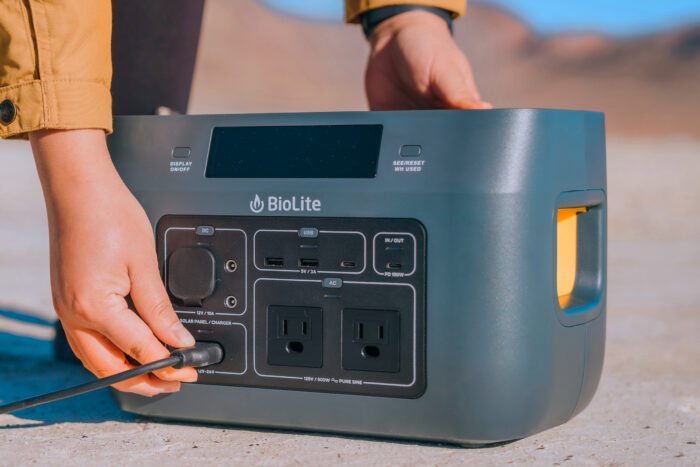
These are all minor attributes of the BioLite BaseCharge 600. And maybe I only see them because I’m a professional gear reviewer and nerd.
I found the control panel and display one of the easiest to use. My default is to toss any instruction manual, and I refuse to reference the internet while camping. None of that was required with the BaseCharge 600, as the control buttons, plugs, and display are laid out and labeled logically. My 10-year-old daughter figured it out without any input from me.
I appreciated that the AC charger was on the smaller side, and it was impossible to plug it into the BaseCharge 600 incorrectly. But from what I can tell, the plug is proprietary, so a replacement must come from the brand. I wish power station brands would make AC chargers much smaller and either stored inside or integrated into the unit.
The cooling fan sporadically kicked on inside a rooftop tent in 60-70-degree weather. It was on the loud side for a power station, waking me from a well-deserved slumber once.
BioLite BaseCharge 600 Power Station: Conclusions
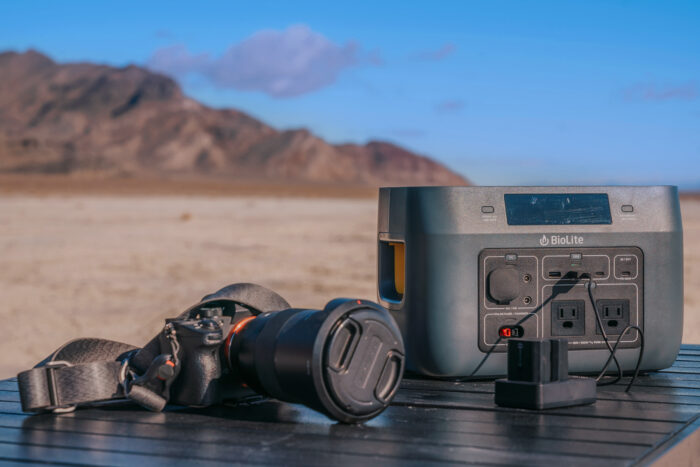
I have plenty of outdoor-focused power stations from recognized brands. They all work well. It’s hard to differentiate between outdoor brands’ high-quality power station offerings.
What set the BioLite BaseCharge 600 apart are the low weight, small dimensions, and, if you care, the visual aesthetics. The BaseCharge 600 won me over on these attributes and became a permanent resident in the back of my Subaru. I’m now always prepared to bust out the notebook or camera gear and produce work.
Another standout characteristic was the durability. Although I’ve only had one bad experience with a high-end outdoor brand power station, I have had some overheat from high current demands and show wear and tear in short order. The BioLite BaseCharge works as well as the day I got it and still looks great, despite my well-known disregard for gear.
At $559, the pricing aligns with similar units from reputable brands like Goal Zero, Jackery, and Bluetti, among others. The BioLite BaseCharge 600 is a safe bet at a fair price for use scenarios like mine.
